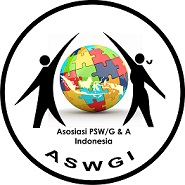GENDER STUDY ON REPRODUCTIVE HEALTH ISSUES AMONG ADOLESCENTS AT TUTUN SEHATI CLINIC, TANJUNG MORAW DISTRICT, INDONESIA
Abstract
Keywords
Full Text:
PDFReferences
Abdi, B. (2021). Muslim men’s perceptions and attitudes on family planning: a qualitative study in Wajir and Lamu counties in Kenya. Sexual and Reproductive Health Matters, 29(1), 1–11. https://doi.org/https://doi.org/10.1080/26410397.2021.1893890
Acharai, L. (2023). Sexual and reproductive health and gender-based violence among female migrants in Morocco: a cross sectional survey. BMC Women’s Health, 23(174), 1–10. https://doi.org/10.1186/s12905-023-02307-1
Adia, M. M. (2025). Medicinal plant species used for contraception and reproductive health care in rural Uganda. Heliyon., 11(1), e41518. https://doi.org/10.1016/j.heliyon.2024.e41518
Aesthetica Islamy, F. (2019). Factors affecting the menstrual cycle in third-year adolescent girls. Jurnal Keperawatan Jiwa, 7(1), 13–18. https://doi.org/10.26714/jkj.7.1.2019.13-18
Alhassan, R. K. (2019). Determinants of Use of Mobile Phones for Sexually Transmitted Infections (STIs) Education and Prevention Among Adolescents and Young Adult Population in Ghana: Implications of Public Health Policy and Interventions Design. Reproductive Health, 16(120), 1–11. https://doi.org/https://doi.org/10.1186/s12978-019-0763-0
Askhori, S. (2021). Socio-Economic Analysis and Incidence of Sexually Transmitted Infections in North Sumatra Province. Contagion: Scientific Periodical Journal of Public Health and Coastal Health, 3(1), 29–41. https://doi.org/http://dx.doi.org/10.30829/contagion.v3i1.9268
Asratie, M. H. (2024). What are the associated factors of low husbands/partners independent decision-maker in women’s contraceptive use decision-making process in Ethiopia? Multilevel analysis. BMC Public Health, 24(2185), 1–10. https://doi.org/10.1186/s12889-024-19572-w
Azanaw. (2021). Factors Associated with Numbers of Antenatal Care Visits in Rural Ethiopia. Journal of Multidisciplinary Healthcare, 14(1), 1403–1411. https://doi.org/dx.doi.org/10.2147/JMDH.S308802
Chattu, V. K. (2020). Emerging infectious diseases and outbreaks: implications for women’s reproductive health and rights in resource-poor settings. Reproductive Health, 17(43), 1–10. https://doi.org/10.1186/s12978-020-0899-y
Desrosiers, A. (2020). A systematic review of sexual and reproductive health interventions for young people in humanitarian and lower-and-middle-income country settings. BMC Public Health, 20(66), 1–10. https://doi.org/10.1186/s12889-020-08818-y
Dwi Astuti, U. K. (2020). Pola Menstruasi dengan Terjadinya Anemia Pada Remaja Putri. Jurnal Ilmu Keperawatan Dan Kebidanan, 11(2), 314–327. https://doi.org/10.26751/jikk.v11i2.832
Hayya, R. F. (2023). Hubungan Tingkat Stress, Makanan Cepat Saji Dan Aktivitas Fisik Terhadap Siklus Menstruasi Pada Remaja Di Pmb N Jagakarsa. SENTRI : Jurnal Riset Ilmiah, 2(4), 1338–1355. https://doi.org/10.55681/sentri.v2i4.751
Huda, N. (2024). Dinamika Kesetaraan Gender Ranah Domestik: Perspektif Kyai Pesantren Tradisional Dan Modern Di Kalimantan Selatan. Journal of Gender and Social Inclusion in Muslim Societies, 5(2), 187–195. https://doi.org/10.30829/jgsims.v5i2.22618
Kementerian Kesehatan RI. (2018). Riset Kesehatan Dasar Tahun 2018.
Kusumawati, D. E. (2022). Gambaran Asupan Makanan dan Status Gizi pada Ibu Hamil di Huntara Kelurahan Petobo Kota Palu. Jurnal Bidan Cerdas, 5(1), 25-31.
Lakhan, R., Agrawal, A., & Sharma, M. (2020). Prevalence of Depression, Anxiety, and Stress during COVID-19 Pandemic. Journal of Neurosciences in Rural Practice, 11(4), 519–525. https://doi.org/10.1055/s-0040-1716442
Melesse, D. Y. (2020). Adolescent sexual and reproductive health in sub-Saharan Africa: who is left behind? BMJ Global Health, 5(1), 1–10. https://doi.org/10.1136/bmjgh-2019-002231
Micah, A. (2020). Health sector spending and spending on HIV/AIDS, tuberculosis, and malaria, and development assistance for health: progress towards Sustainable Development Goal 3. The Lancet, 396(10252 693-724), 693–724. https://doi.org/10.1016/S0140-6736(20)30608-5
Muhibbuthabry. (2023). Qanun, religious education, religiosity and sexual activity among Muslim youth. HTS Teologiese Studies/Theological Studies, 79(1), 8020–8029. https://doi.org/https://doi.org/10.4102/hts.v79i1.8020
Mularsih, S. (2020). Gambaran Pengetahuan Dan Sikap Remaja Tentang Infeksi Menular Seksual (IMS) Di Desa Muntal Pakintelan Kota Semarang. Maternal, 4(2), 89–93.
Ojikutu, B. O., Pathak, S., Srithanaviboonchai, K., Limbada, M., Friedman, R., Li, S., Mimiaga, M. J., Mayer, K. H., Safren, S. A., Cummings, V., Dai, J. Y., Celentano, D. D. P., Elharrar, V., Emel, L., Gaydos, C., Hamilton, E., Hughes, J., Kelly, C., London, A., … Waller, H. (2016). Community cultural norms, stigma and disclosure to sexual partners among women living with HIV in Thailand, Brazil and Zambia (HPTN 063). PLoS ONE. https://doi.org/10.1371/journal.pone.0153600
Ontiri, S. (2021). A qualitative exploration of contraceptive use and discontinuation among women with an unmet need for modern contraception in Kenya. Reproductive Health, 33(1), 1-10. https://doi.org/10.1186/s12978-021-01094-y
Puspawati. (2020). Late Latent Syphilis Accompanied By Ocular Syphilis In A Geriatric Patient: A Case Report. Bali Medical Journal, 9(1), 208–210.
Rezky, Irmayanti, D. D. (2019). Tingkat Stres Dengan Gangguan Menstruasi Pada Remaja Putri: Studi Crossectional. Jurnal Fenomena Kesehatan, 02(01), 243–251.
Rosenthal, L. (2020). Gendered racism and the sexual and reproductive health of Black and Latina Women. Ethnicity & Health, 25(3), 367–392. https://doi.org/10.1080/13557858.2018.1439896
Saifuddin, A. (2021). Merumuskan Faktor Penyebab Dan Solusi Pelecehan Seksual Menggunakan Perspektif Psikologi, Sosial, Dan Agama. Academia Journal of Multidisciplinary Studies, 5(2), 381–420.
Sembiring, B. A., Rosdewi, N. N., & Yuningrum, H. (2022). Hubungan Aktivitas Fisik dengan Kejadian Obesitas pada Remaja di SMA Swasta Cerdas Bangsa , Kecamatan Deli Tua , Kabupaten Deli Serdang , Medan. Jurnal Forum Ilmiah, 7(1), 87–95.
WHO. (2013). Factsheet of Sexually Transmitted Infections (STI’s).
Windani, S. (2023). Implementasi Hukum Dalam Sistem Pendidikan Untuk Mencegah Kekerasan Seksual Terhadap Anak. Journal of Gender and Social Inclusion in Muslim Societies, 4(2), 75–84. https://doi.org/10.30829/jgsims.v4i2.19004
World Health Organization. (2009). on Hand Hygiene in Health Care First Global Patient Safety Challenge Clean Care is Safer Care.
Wulandari, H. (2023). Penerapan Materi Pendidikan Seksual di Sekolah PAUD dalam Upaya Mencegah Kekerasan Seksual. Journal on Education, 6(1), 5127–5134. https://doi.org/https://doi.org/10.31004/joe.v6i1.3686
DOI: http://dx.doi.org/10.30829/jgsims.v6i1.20203
Refbacks
- There are currently no refbacks.
Copyright (c) 2025 Journal of Gender and Social Inclusion in Muslim Societies

This work is licensed under a Creative Commons Attribution-ShareAlike 4.0 International License.
Pusat Studi Gender dan Anak Universitas Islam Negeri Sumatera Utara
Jl. Williem Iskandar, Pasar V Medan, Medan Estate 20371
» Tel / fax : (061) 6615 683 /




